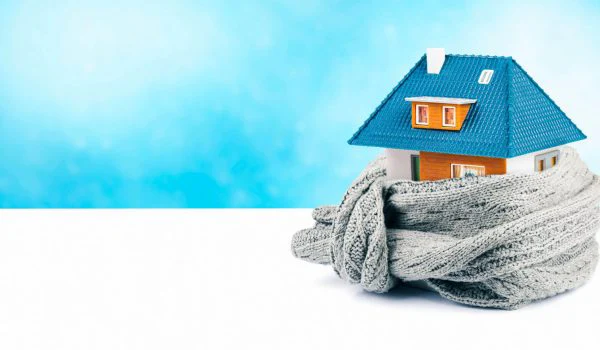Los Angeles homes face a unique load on heating and cooling. Marine layers roll in, afternoons spike into the 90s, and many houses were built before modern energy codes. R38 insulation steps in as a practical upgrade that trims energy waste, calms indoor temperatures, and supports clean indoor air. For homeowners in neighborhoods from Sherman Oaks to Silver Lake, the right attic insulation is one of the highest-return projects available.

What R38 Actually Means in Los Angeles
R-value measures resistance to heat flow. The higher the R-value, the better the insulation resists heat transfer. R38 is a common target for attics in the Los Angeles area because the attic is the main gateway for heat gain in summer and heat loss in winter. Think of it this way: if the attic lacks R38, the HVAC system has to fight the sun all afternoon and then keep running after sunset to tame the residual heat stored in the framing and roof deck.
Most older LA homes have anywhere from R0 to R19 in the attic. A jump to R38 cuts the load on the air conditioner and furnace. In practice, that means fewer cycles, quieter evenings, and longer equipment life.
Where R38 Delivers Value You Can Feel
R38 insulation Los Angeles projects consistently produce noticeable benefits in comfort and cost:
- Lower energy bills: Many clients see 10 to 25 percent savings on combined heating and cooling after adding R38 in the attic, with higher savings in homes that started with little or no insulation. More stable room temperatures: Hot rooms over garages or sunny rear additions stop swinging ten degrees between afternoon and night. Quieter interiors: Dense coverage in the attic helps dampen street noise from corridors like Venice Boulevard or Laurel Canyon. Better indoor air quality: Proper air sealing plus fresh insulation reduces dust, pollen, and attic-born contaminants entering living spaces.
The LA Climate Factor: Heat Beats Down, Air Rises Up
Summer sun on a low-slope roof can drive attic temperatures above 130°F. Without adequate insulation, that heat radiates into bedrooms and hallways well into the evening. In winter, warm air leaks out through gaps around can lights, access hatches, and top plates. R38 insulation only delivers full value when paired with air sealing. Insulation slows heat transfer. Air sealing blocks the pathway. Together, they create a stable barrier.
Pure Eco Inc sees the same pattern in the San Fernando Valley, the Westside, and the foothills: attic air sealing plus R38 brings indoor temperatures within a tight, comfortable range even during heat waves.
Material Choices: Fiberglass, Cellulose, and Spray Foam
Each material can reach R38, but they differ in cost, performance, and best-use cases.
Fiberglass batts or blown-in: The common choice for cost-effectiveness and speed. Blown fiberglass provides good coverage around joists and irregular bays. It is inert, does not settle much, and works well in most LA attics.

Cellulose blown-in: Made from treated recycled paper, cellulose is dense and handles odd cavities well. It reduces air movement within the insulation layer and offers solid sound dampening. It can settle slightly over time, so installers account for that to preserve R-value.
Closed-cell spray foam: High R-value per inch and strong air sealing in one. It shines in tight spaces, cathedral ceilings, or low-clearance eaves. It costs more and requires careful ventilation planning. Many LA attics do not need full spray foam to meet R38; targeted foam in problem areas combined with blown-in insulation often hits the price-performance sweet spot.
A seasoned crew will match the material to the attic structure, roof vents, existing wiring, and the homeowner’s budget. In Los Angeles, blown-in systems usually provide the best ROI for standard attics.
What a Proper R38 Upgrade Looks Like
A well-run project follows a tight sequence that avoids common pitfalls. Here is a concise checklist Pure Eco Inc uses on Los Angeles jobs:
- Inspect and measure: Document attic height, joist depth, existing insulation, duct condition, knob-and-tube wiring, and bath fan terminations. Air seal first: Seal top plates, electrical penetrations, can lights (IC-rated), and the attic hatch. Foam and mastic go where they perform best. Protect ventilation: Baffle soffit vents, clear ridge and gable vents, and keep the insulation off the roof deck. Address ducts: Seal with mastic and insulate exposed runs if needed. This step protects the investment. Install to depth and density: Blow or place insulation to reach true R38 throughout, verified with depth markers.
This sequence matters. Skipping air sealing, for example, leads to dusty rooms and uneven temperatures even after adding R38.
Cost, Payback, and Rebates in LA
Costs vary by attic size, material, and prep work. For a typical 1,200 to 2,000 square foot home in Los Angeles, R38 attic insulation projects often range from the low thousands to mid thousands. Homes with heavy debris removal, rodent cleanup, or duct remediation fall on the higher end.
Electricity rates in LA make insulation a solid investment. Many homeowners recoup the cost in three to six years, sometimes sooner in valley areas with hotter summers. Rebates may be available through utility programs that encourage air sealing and insulation. Availability changes over time, so an in-home assessment is the best way to verify current incentives.
Real-World Results from Local Homes
A 1948 bungalow in Mar Vista had patchy attic insulation and leaky ductwork running through a sweltering attic. After air sealing, duct sealing, and blown-in fiberglass to R38, cooling demand dropped by about 20 percent, and the back bedroom stopped running five degrees attic insulation Los Angeles hotter than the rest of the home.
A 1960s ranch in Woodland Hills showed strong attic insulation Los Angeles heat gain after 3 pm. The roof faced west, and the family room felt like a sunroom until late evening. R38 cellulose, new baffles at the soffits, and a sealed attic hatch brought the swing down to one or two degrees. The owners noticed the AC cycling less at bedtime.
Health and Safety in Older Los Angeles Attics
Many pre-1978 homes carry legacy hazards. A professional team knows how to handle them:
- Old materials: If vermiculite or unknown insulation is present, the crew tests for asbestos before disturbance. Wiring: Non-IC can lights need covers or upgrades to avoid overheating. Knob-and-tube wiring changes the insulation approach and may require an electrician. Rodent activity: Droppings and contaminated insulation are removed under containment with proper disposal, then the attic is sanitized before new insulation goes in.
These steps reduce the risk of odors, dust, and allergens showing up after the project.
Why R38 Helps During Power Alerts
Los Angeles often faces Flex Alerts during heat waves. Homes with R38 in the attic hold cool air longer in the afternoon. AC systems can cycle less during peak hours, easing load on the grid while keeping rooms livable. That buffer helps protect comfort during short outages and reduces stress on older condensers and furnaces.
Signs Your Attic Needs an Upgrade
Homeowners across Los Angeles ask similar questions. A few indicators point to the need for R38:
- Rooms under the attic run hotter than lower floors from late afternoon through bedtime. Dust builds up quickly even with frequent cleaning, suggesting attic air leakage. The AC struggles to reach setpoint on hot days, or the furnace short cycles on cool nights. Energy bills remain high despite newer HVAC equipment. You can see ceiling joists above thin, uneven insulation when you peek into the attic.
If two or more of these describe the home, an attic assessment is overdue.
Local Value: Neighborhood Considerations
Coastal zones like Santa Monica and Playa Vista deal with cool, damp mornings and warm afternoons. Proper baffles and R38 keep moisture from condensing in the attic while stabilizing temperatures. Valley areas like Encino, Reseda, and Burbank benefit from higher heat resistance through the peak season, which can push into October. Hillside homes in Eagle Rock or Mount Washington often have irregular framing. Blown-in systems are ideal for reaching odd cavities and tight corners.
What Homeowners Can Do Before an Estimate
A short prep makes the site visit faster and more productive. Clear access to the attic hatch. Note any rooms with comfort issues, noise concerns, or cooking odors that linger. Share recent utility bills so the estimator can rough out expected savings and payback. If the house has had roof leaks, point them out so the crew checks for moisture or mold before installing R38.
Why Choose Pure Eco Inc for R38 Insulation in Los Angeles
Pure Eco Inc focuses on energy upgrades that solve real comfort problems. The team spends time on air sealing, which is where many projects fall short. Installers protect ventilation paths, document depth with markers, and verify coverage around eaves and chases. The company works across Los Angeles, including Pasadena, Glendale, Studio City, Santa Monica, Culver City, and the South Bay.
Expect straight talk on materials, honest discussion about code and safety, and a clean worksite. Clients get before-and-after photos of the attic, duct sealing results where applicable, and guidance on rebates when available.
Ready for a Cooler, Quieter Home?
If a bedroom runs hot, the AC struggles, or dust won’t stay away, the attic is likely the culprit. R38 insulation Los Angeles upgrades create measurable comfort and real savings, often within the first billing cycle. Schedule a free assessment with Pure Eco Inc. A short visit can confirm the current R-value, show air leaks with simple tests, and outline a clear plan to reach R38 the right way.
Book an appointment today. Pure Eco Inc serves single-family homes, condos with accessible attics, and multi-unit buildings across Los Angeles, CA. The crew is ready to help the home feel cooler, cleaner, and quieter year-round.
Pure Eco Inc. provides professional attic insulation and energy-saving solutions in Los Angeles, CA. For over 20 years, our family-owned company has helped homeowners improve comfort, reduce utility bills, and make their homes more energy efficient. We specialize in insulation upgrades, spray foam installation, and attic cleanup for homes across Los Angeles County. At Pure Eco Inc., we believe in treating our customers like family and creating a greener, healthier living environment for every household we serve. Call today to schedule an attic insulation inspection or get a free estimate.
Pure Eco Inc.
422 S Western Ave #103
Los Angeles,
CA
90020,
USA
Phone: (213) 256-0365
Website: https://www.pureecoinc.com
Social Media: Facebook | X | Instagram | Yelp
Map: View on Google Maps